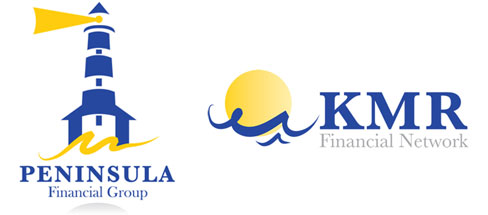Tax Diversification
For Maximum Retirement Income You Need Tax Diversification
One of the most important tenets of investing for retirement is to diversify broadly for the best possible long-term returns in your portfolio. However, for the best possible outcome in generating maximum retirement income, special attention needs to be given to achieving optimal tax diversification. Conventional portfolio diversification focuses on blending together a mix of assets from across the spectrum of asset classes that creates the best opportunities to capture returns in any market environment while reducing portfolio volatility. Tax diversification focuses on blending together various types of investment vehicles with varying tax properties in order to minimize taxation on retirement income.
Two Retirement Investors and Two Very Different Paths
Jason, who has targeted $100,000 net income for retirement, converted his 401k plan, to which he made maximum contributions for most of his working life, to a Rollover IRA. Of course, he enjoyed significant tax deductions on his 401k contributions.
Evan took a different route to his targeted net-income goal of $100,000. Early in his career, he contributed as much as he could to a Roth IRA. He also took the opportunity to convert some smaller, traditional IRAs to a Roth later in his career. During his peak earning years, instead of completely maxing out his retirement plan contributions, he invested in a non-tax qualified investment account of stock mutual funds and exchange-traded funds.
Both Jason and Evan retired at the same time, age 65; and both have a requirement of $100,000 to meet all of their spending needs including a $10,000 charitable contribution.
Tax Implications with Two Different Outcomes
Jason has just one option, which is to withdraw the $100k from his IRA. His adjusted gross income is $100k, from which he made a charitable deduction of $10,000. After other deductions and exemptions, his taxable income is a little over $80,000 for which he will pay taxes at the 15 percent marginal rate for federal taxes – about $12,000.
Evan has several different options. First, he is able to harvest some losses in his taxable investment account to max out his $3,000 deduction for investment losses. Then, instead having to use after-tax dollars for a charitable deduction, he applies a couple of his appreciated stock assets thereby avoiding taxes on the gains while still providing a deduction for the contribution. For his net-$90k of spending needs, he withdraws $80,000 from his Roth IRA, free of taxes, and $10,000 from dividends and capital gains in his taxable investment account. Through his added deductions and use of tax-free income sources, Dr. Jones was able to keep his taxable income below $20,000 with a tax bill of less than $2,000.
The $10,000 Evan did not have to withdraw to meet his income requirement can remain invested and continue to compound the growth of his assets.
Lessons Learned
The tax code is loaded with ways to minimize taxes currently, which is often the focus of high earning physicians. However, it is also load with ways to create a long-term strategy for maximizing retirement income, which, for retirees, suddenly becomes the more important priority. Jason actually fared pretty well, having generated tax deductions in his 33 percent on his maximum 401k contributions; then having to pay taxes on those contributions at a 15 percent rate. However, because Evan is able to keep $10,000 of his assets working for him each year in retirement, he has a better chance to actually enhance his lifetime income sufficiency over time.
Important Note: The tax code can be very fluid, subject to the whims and politics of politicians who may not have your best interests at heart. The strategy you employ today could have different tax implications than you intended 20 years down the road. The key is to diversify your strategy while remaining flexible, and always make your tax diversification decisions with the guidance of an experienced tax professional.

